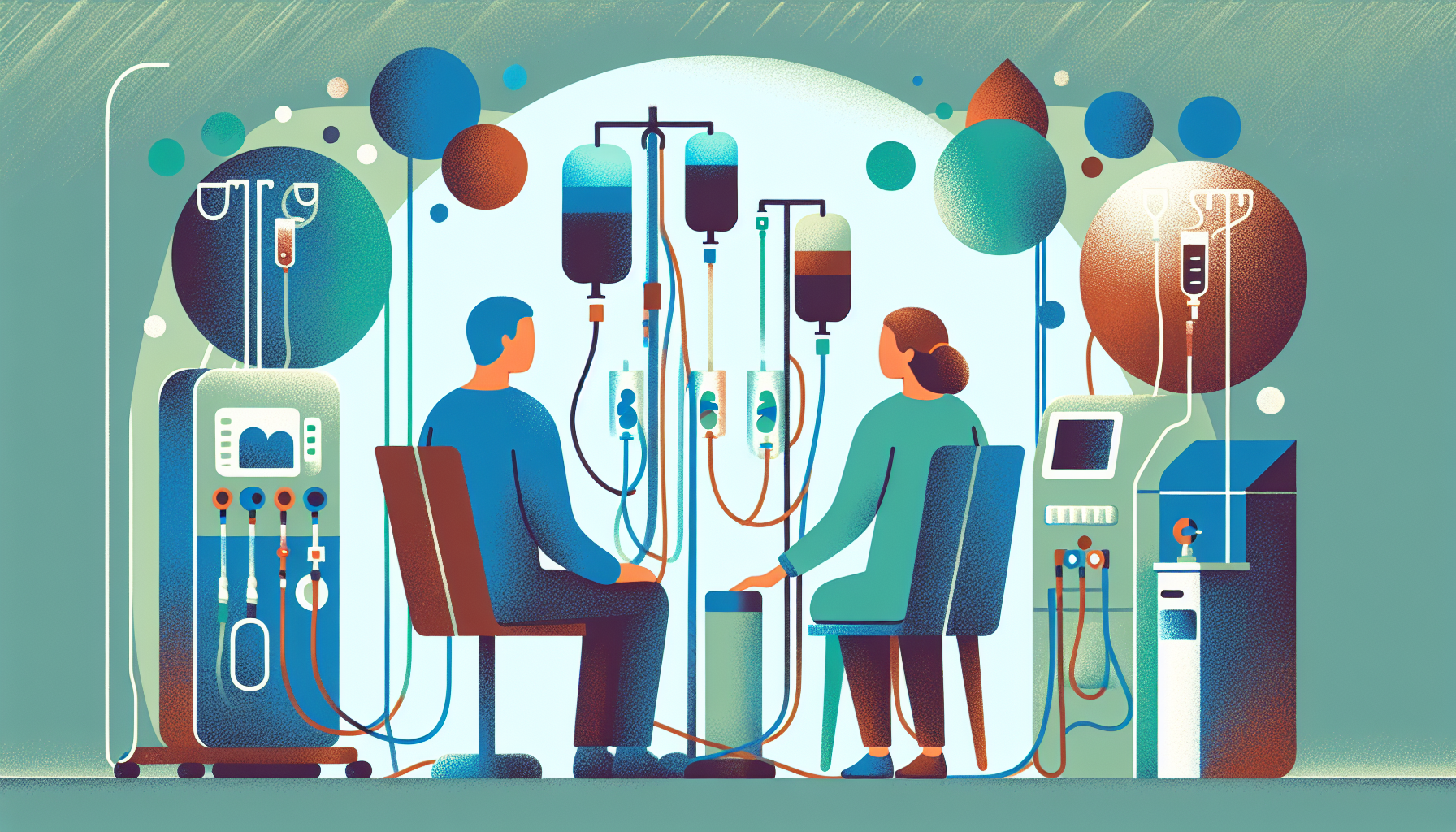Can I Take Zepbound a Day Early?
Key TakeawaysZepbound is a once-weekly injectable medication for weight management and obstructive sleep apnea (OSA) linked to obesity.Taking Zepbound a day early is [...]
Read MoreIf you or a loved one has been diagnosed with kidney failure, your doctor may have mentioned dialysis as a treatment option. Dialysis is a life-saving procedure that takes over the functions of your kidneys when they are no longer able to do their job. In this article, we'll explain what dialysis is, who needs it, and the different types of dialysis available.
Your kidneys are two bean-shaped organs located just below your rib cage, on each side of your spine. They play a crucial role in maintaining your overall health by:
Removing waste and excess fluid from your body
Regulating your blood pressure
Keeping your bones strong
Ensuring the right balance of minerals, such as potassium and sodium, in your blood
Producing a hormone that stimulates red blood cell production
When your kidneys are no longer able to perform their functions adequately, you may need dialysis or a kidney transplant to survive. This condition is known as kidney failure or end-stage renal disease (ESRD). Kidney failure can be caused by various factors, including:
Injuries
Chronic health conditions like lupus, high blood pressure, or diabetes
Unknown reasons
Your doctor will recommend starting dialysis when you have symptoms of kidney failure, such as nausea, fatigue, and swelling, or when your lab tests show dangerous levels of waste in your blood.
There are two main types of dialysis: hemodialysis and peritoneal dialysis.
In hemodialysis, a machine filters your blood outside your body, cleaning it before returning it to your body. This process typically takes place at a dialysis facility or hospital, but it can also be done at home. Before starting hemodialysis, you'll need a minor surgery to create direct access to your bloodstream through a fistula, graft, or catheter.

Peritoneal dialysis (PD) uses the lining of your abdomen (peritoneum) to filter your blood. A special fluid called dialysis solution is introduced into your abdominal cavity through a catheter, absorbing waste and excess fluid from your blood. After a few hours, the solution is drained from your body. PD is typically done at home, either manually (continuous ambulatory peritoneal dialysis) or with the help of a machine (automated peritoneal dialysis).
While dialysis shouldn't be painful, you may experience some side effects, such as:
Itchy skin
Low blood pressure
Sleep problems
Fluid overload
Infections
Depression or mood swings
Nausea and vomiting
Muscle cramps
Fatigue
To stay healthy on dialysis, it's essential to monitor your access site for signs of infection, keep your catheter clean and dry, and ensure that anyone assisting with your treatment follows proper hand hygiene.
Dialysis is a life-sustaining treatment that can improve your quality of life, but it's not for everyone. Some people, particularly those who are elderly or have other severe medical conditions, may choose not to start or to stop dialysis. If you're considering stopping dialysis, discuss alternative treatments and lifestyle changes with your doctor that may help manage your symptoms and improve your well-being.
Dialysis is a treatment that takes over kidney functions when they fail.
Kidney failure can be caused by injuries, chronic health conditions, or unknown reasons.
There are two main types of dialysis: hemodialysis and peritoneal dialysis.
Dialysis can cause side effects, ranging from minor to severe.
Some people may choose not to start or to stop dialysis based on their individual circumstances.
For more information on dialysis and kidney failure, consult the following reputable sources:
Key TakeawaysZepbound is a once-weekly injectable medication for weight management and obstructive sleep apnea (OSA) linked to obesity.Taking Zepbound a day early is [...]
Read MoreKey TakeawaysZepbound is an FDA-approved medication for chronic weight management in adults with obesity or overweight, and for moderate to severe obstructive sleep apnea [...]
Read MoreKey TakeawaysZepbound is a once-weekly injectable medication that supports weight loss by activating hormone pathways regulating appetite and digestion.After the first dose, [...]
Read More